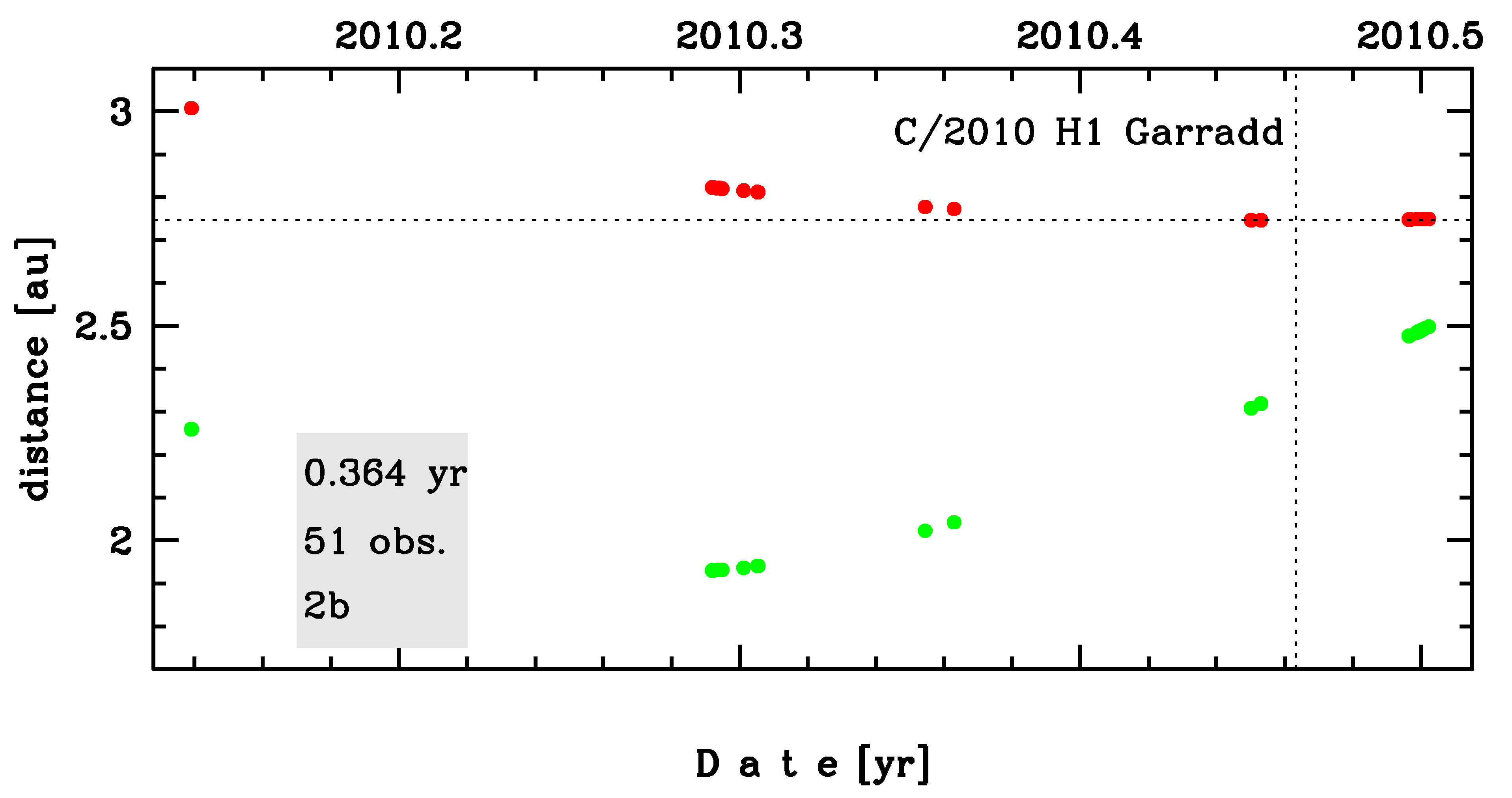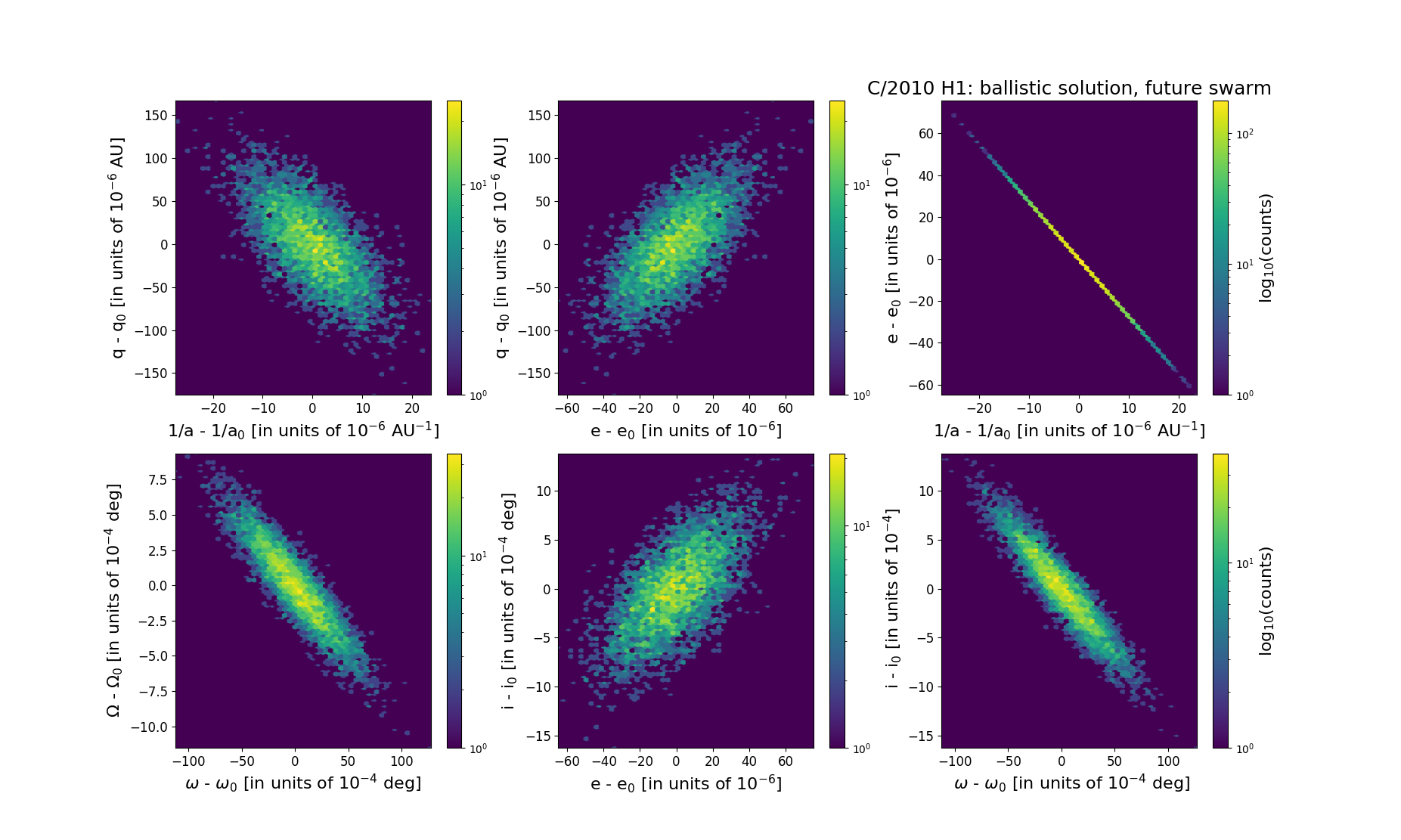C/2010 H1 Garradd
more info
Comet C/2010 H1 was discovered on 16 April 2010 by Gordon J. Garradd (Siding Spring Survey); that is about 2 months before its perihelion passage. A few pre-discovery images of this comet taken on 19 February 2010 during Siding Spring Survey were found. The comet was observed until 2 July 2010.
Comet had its closest approach to the Earth on 9 April 2010 (1.924 au), about a week before its discovery.
Solution given here is based on data spanning over 0.375 yr in a narrow range of heliocentric distances: 3.01 au – 2.746 au (perihelion) – 2.75 au.
This Oort spike comet suffers moderate planetary perturbations during its passage through the planetary system, these perturbations lead to a more tight future orbit of about 1,800 au.
See also Królikowska and Dybczyński 2013 and Królikowska 2020.
Comet had its closest approach to the Earth on 9 April 2010 (1.924 au), about a week before its discovery.
Solution given here is based on data spanning over 0.375 yr in a narrow range of heliocentric distances: 3.01 au – 2.746 au (perihelion) – 2.75 au.
This Oort spike comet suffers moderate planetary perturbations during its passage through the planetary system, these perturbations lead to a more tight future orbit of about 1,800 au.
See also Królikowska and Dybczyński 2013 and Królikowska 2020.
| solution description | ||
|---|---|---|
| number of observations | 51 | |
| data interval | 2010 02 19 – 2010 07 02 | |
| data type | perihelion within the observation arc (FULL) | |
| data arc selection | entire data set (STD) | |
| range of heliocentric distances | 3.01 au – 2.75 au (perihelion) – 2.75 au | |
| detectability of NG effects in the comet's motion | NG effects not determinable | |
| type of model of motion | GR - gravitational orbit | |
| data weighting | NO | |
| number of residuals | 86 | |
| RMS [arcseconds] | 0.62 | |
| orbit quality class | 2b | |
| orbital elements (barycentric ecliptic J2000) | ||
|---|---|---|
| Epoch | 2318 03 31 | |
| perihelion date | 2010 06 19.77197346 | ± 0.00819085 |
| perihelion distance [au] | 2.74093201 | ± 0.00004332 |
| eccentricity | 0.99848483 | ± 0.00001860 |
| argument of perihelion [°] | 233.764464 | ± 0.002954 |
| ascending node [°] | 347.339475 | ± 0.000283 |
| inclination [°] | 36.505432 | ± 0.000399 |
| reciprocal semi-major axis [10-6 au-1] | 552.79 | ± 6.79 |
| file containing 5001 VCs swarm |
|---|
| 2010h1a1.bpl |

